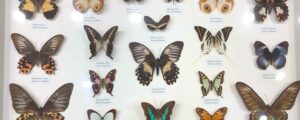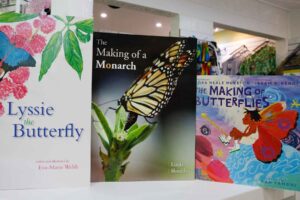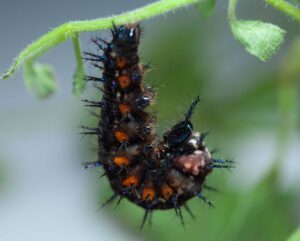A butterfly has four wings – two on each side. They are broken into two forewings and two hindwings. The wings are attached to the second and third thoracic segments (the meso- and meta-thorax). When a butterfly is in flight, the wings move up and down in a figure-eight pattern.
Butterfly wings are made up of two chitonous layers (membranes). Each wing is covered by thousands upon thousands of colourful scales and hairs.
These wing scales are tiny overlapping pieces of chitin on a butterfly or moth wing. They are outgrowths of the body wall and are modified, plate-like setae (hairs).
Most butterflies have different patterns on the front and back of their wings.
Scent scales are modified wing scales on the forewing of male butterflies and moths (on the costal fold) that release pheromones. These chemicals attract females of the same species. The scent scales are also known as androconia.
You can view butterfly wings up close with our state of the art microscope in our breeding laboratory, here at the Australian Butterfly Sanctuary.






